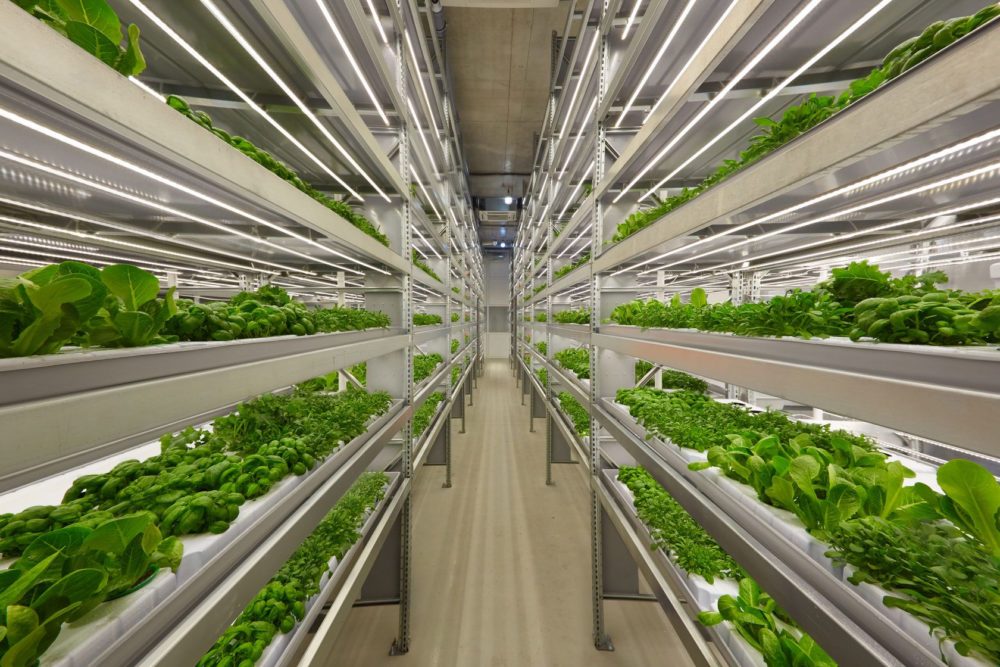Vertical farms could well be on the right side of history – and especially so in light of Covid-19, with many vertical farmers now feeling their approach is the key to more resilient, hyper-local, and traceable supply chains.
But that does not mean it always makes financial sense to build or own a vertical farm. Even after years of progress as access to vertical farming technologies widens, the whole operational side is still an Enigma code of frustratingly complex logistics. Drawbacks like high electricity and rental costs combine with the complexity of indoor plant science and high-spec robotics. The vital linkage point is a farm’s artificial intelligence, which still has a long way to go.
It’s why some early-stage investors — excited in principle by what vertical farming could bring to cities, deserts, the Arctic, or even Mars — sometimes seek out ventures more tangentially related to the space. AFN‘s parent company AgFunder, for instance, invested in Intelligent Growth Solutions, a UK startup providing tech for prospective indoor farmers – including smart grid systems to reduce electricity usage.
Similarly, iFarm — a Helsinki-based startup providing software solutions and hardware advisory services for indoor farms — is another ‘picks and shovel seller’ by the vertical farming goldmine. It’s working on solving some of the AI backbone pain points for anyone building their own vertical farm, and has just raised $4 million in funding.
The round was led by Gagarin Capital Partners (a Silicon Valley VC focused on AI and named after the first man in space) and joined by Matrix Capital, Impulse VC, IMI.VC, along with various undisclosed business angels.
In an email to AFN, Gagarin’s managing partner Mikhail Taver explained the rationale for why he would prefer to see iFarm providing solutions for vertical farms, rather than owning and operating them itself.
“A pure SaaS approach enables us to scale a lot faster since we do not depend on capital intensive hardware and do not face the challenge of complex and expensive logistics, thus reducing the need for working capital,” he said. “It is always faster and cheaper to install another server rather than build a million square feet of vertical farms in a faraway country.”
Vertical farming as a service
Indeed, as some of the early movers in the space like Plenty, Aerofarms, or Bowery are finding, building and operating a vertical farm needs a hefty wad of capital. There’s the initial vertically stacked infrastructure to design and install; those layers upon layers of leafy greens or strawberries quietly growing beneath the pink glow of LED lights, often in city centers with rental prices that would make open field farmers balk. Then, there are the data capture systems to wire up – sensors and AI to spot growth patterns and correlate them with changing inputs to discover best practices.
That’s already a lot to think about – and pay for. But there’s more to worry accountants. It turns out that vertical farms may need a whole newly-bred set of seeds better suited to life indoors; Temasek and Bayer just set aside $30 million for a startup devoted to this purpose. Or there’s the costly question of incorporating aspects of robotic harvesting or maintenance.
On the robotics front, iFarm chief technology officer Max Chizhov said his team had been experimenting with operating drones indoors to hover around, helping with inspections and data collection. “If your farm is ten meters high,” said Chizhov, “it’s really a problem for all these people who observe the farm every day.”
Indoor drones
Elsewhere, iFarm’s automated vertical farm management technologies allow customers to start growing salads, greens, berries, and vegetables in the urban environment – from empty warehouses and factory floors, to basements and distribution centers. The technology is based on an adaptive protocol that includes computer vision and machine learning, all drawn from data about thousands of plants collected from a distributed network of farms, as well as industry knowledge. The iFarm Growtune platform, Chizhov claimed, can determine the plant’s weight, any growth deviations or pathologies, and build a system that improves crops’ quality characteristics on its own. It provides recommendations to farm staff and adjusts microclimate settings to ensure better results.
The company will use the funding to bring iFarm Growtune to another stage, enabling operations of multiple varieties of vertical farms and quadrupling the number of plants available. In addition, iFarm will be optimizing its automated production lines to reduce labor costs and complete experiments with growing strawberries, cherry tomatoes, sweet peppers, radish, and other crops.
Describing his firm’s due diligence of these claims, Gagarin’s Taver described how he had brought in “technical experts to do hardcore technical questioning.”
This investment, he said, is “a part of a larger agtech strategy.” Gagarin’s team “strongly believe in the sector and specifically target indoor farming […] The shrinking quantity of arable land available, growing urban density, and significant challenges to the environment posed by traditional outdoor farming lead us to believe that the future lies indoors.”
He added, “iFarm grows produce; we also have FourGrowers [in our portfolio] that specialize in harvesting it. We have yet to find the missing piece of puzzle – a startup that specializes in consuming the food.”




